Description
ABSTRACT
The study of the impact of Awka urban vegetation distribution on bird abundance, species richness and diversity was carried out in Awka, the Anambra state capital, Nigeria The study was done in the residential area, non residential area, agricultural area, commercial area, and a forest which acted as a reference site Bird sampling data, vegetation sampling data and weather data were collected during the study using the fixed radius point count method for birds; the l0m by 10m plot for trees sampling and 1m by a 1m sub plot for non tree vegetation species; and weather data using the celsius thermometer for temperature, the digital hygrometer for humidity, the digital anemometer for wind speed and the lux meter for light intensity 69 bird species belonging to 32 families were observed during the study Colurnbidae, Lybidae, Cuculidae and Sylvidae with 6, 6, 5, 5 species respectively were the dominant families The African pied crow Corvus albus, African black kite Milvus migrans, and the Northern greyhead sparrow Passer griseus were the most widely distributed species with 647, 5 88 and 412 respectively The study showed that urbanization creates habitats different from the natural ones that harbor different types of birds The Red eye dove Streptopelia semitorquata Common bulbul Pycnonotus barbatus, Barrati warbler Bradypterus barrati and Laughing dove Streptepelia senegalensis showed affinity for the residential area; the Rock pigeon Columba livia and Northern Greyhead sparrow Passer griseus for the commercial area; the Blue spotted wood dove Turtur afer, Yellow rumped Tinker bird Pogoniulus bilineatus, Yellow billed barbet Trachyphonus purpuratus, and European bee eater Merops apiaster for the palm plantation, and several birds for the forest The study showed that urbanization had a negative impact on birds and plants reducing their species richness and diversity and affecting their abundance While the populations of native species were reduced and in certain cases eliminated, the populations of non native species that were able to thrive in modified habitats increased There was a significant decrease in bird species richness across the sites, from forest to the commercial area The study also showed a significant increase in birds abundance across the sites, from forest to the commercial area The study showed a significant decrease in floral abundance, richness and diversity; and a significant decrease in tree abundance, richness and diversity from the forest to the commercial area, Floral abundance and floral species richness had little or no impact on the abundance and species richness of birds, while vegetation height of which trees contribute a significant part, tree species richness and tree abundance had very significant effect on birds species richness This shows the importance of trees in birds conservation and preservation Birds species richness was positively correlated with flora species richness, the regression test was not significant pgt;005; and negatively correlated with flora abundance the regression test was not significant pgt;005 Birds species richness was also positively correlated tree richness, the regression test was significant plt;005; and positively correlated with tree abundance, the regression test was significant plt;005 Bird species richness was positively correlated with foliage height across the site, the regression test was significant plt;005; and positively correlated with tree stand basal area, the regression test was not significant pgt;005 Bird abundance was negatively correlated with flora abundance, the regression test was significant plt;005; and negatively correlated with flora species richness, the regression test was significant plt;005 Bird abundance was also positively correlated with tree species richness, the regression test was not significant pgt;005; and positively correlated with tree abundance, the regression test was not significant pgt;005 Birds abundance was positively correlated with foliage height across the site, the regression test was not significant pgt;005; and positively correlated, with tree stand basal area, the regression test was not significant pgt;005 Similar environment and habitats at comparable urbanization levels though in different towns contain similar birds species as shown by the comparative studies between Awka on one hand and Onitsha and Enugwu ukwu towns on the other that produced similar species, species richness and diversity, but different abundance Urbanization creates new unsuitable environments for birds with increased light intensity, decreased temperature and humidity, and increases the wind speed It showed an increase in light intensity and wind speed from the forest to the commercial area; and an increase in temperature from the commercial area to the palm plantation site The forest had a slightly higher temperature than the commercial area and a lower temperature than the palm plantation The study also showed a decrease in humidity from the palm plantation site to the commercial area The forest had a higher humidity than the residential area and the business industiia1 areas, but a lower humidity than the palm plantation site, Birds abundance decreased with decreased temperature, increased humidity, increased light intensity and increased wind speed These were the conditions prevalent during the rainy season, The discovery during the study of habitats such as the cassava Manihot esculenta farm that were avi fauna less or bird less, throws up a lot of future research questions on why such habitats should be bird less, what the importance of this could be for man and implication to bird conservation as a whole The study showed that, in general, most species suffer the effect of urbanization, as it produced communities that were less evenly distributed and unstable
TABLE OF CONTENT
PAGES
TITLE PAGEi
APPROVAL PAGEii
CERTIFICATIONiii
ACKNOWLEGEMENTiv
ABSTRACT v
TABLE OF CONTENT vi
LIST OF FIGURES vii
LIST OF TABLES viii
LIST OF PLATES ix
CHAPTER ONE: INTRODUCTION 1
Urban Ecosystem 1
Birds as Ecological Indicators 1
Objectives of the Study 1
Duration and Scope of the Study 2
CHAPTER TWO: LITETRURE REVIEW 6
21 Features of Urban Ecosystem 6
22 Birds Response to Urban Ecosystem 7
23 Impact of Urban Ecosystems on Birds 8
CHAPTER THREE: MATERIALS AND METHODS 10
31 Description of the Study Areas 10
3,11 The Commercial Areas in Awka 10
3lla Markets 10
31lb Motor Parks 10
313c Commercial Site in Enugwu Ukwu Compaiative Studies 10
311d Commercial Site in Onitsha Comparative Studies 16
312 Non Residential Areas in Awka 16
312a Grass Lands 16
31 2b Shrub Lands 16
313 Agricultural Areas in Awka 16
313a Cassava Farms 16
313b Oil Palm Plantations 16
314 Residential Areas in Awka 17
31 4a Residential Areas with Low Building 17
31 4b Residential Areas with High Building 17
31 ,4c Residential Site with Low Buildings in Enugwu Ukwu Comparative Studies 17
31 4d Residential Site with Low Buildings in Onitsha Comparative Studies17
315 Forest Area Control Site 17
32 Experimental Design 35
33 Bird Abundance 44
34 Vegetation Sampling 45
341 Species Composition of Trees and Herbaceous Species Non Tree Species 45
342 Abundance of Trees and Herbaceous Species Non Tree Species 45
343 Diameter at Breast Height of Tree Species 46
344 Height of Trees and Herbaceous Vegetation 46
35 Weather Data Sampling 47
36 Data Analysis 47
CHAPTER FOUR: RESULTS 49
41 Bird Distribution and Abundance across the Sites 49
42 Birds Species Richness 49
43 Bird Diversity Indices across the Sites 55
44 Vegetation Studies 56
441 Floral Abundance 56
442 Floral Species Richness 56
443 Foliage Height 57
444 Tree Stand Basal Area 57
445 Tree Species Richness 57
446 Tree Abundance 57
447 Comparison Studies Result 65
4471 Comparison of Bird Studies in Awka and Enugwu Ukwu Residential Areas
with Low Buildings 65
4472 Comparison of Bird Studies in Enugwu Ukwu and Awka Commercial Areas 65
4473 Comparison of Bird Studies in Onitsha and Awka Residential Areas with low buildings69
4474 Comparison of Bird Studies in Onitsha and Awka Commercial Sites 69
45 Correlation Studies 73
451 Correlation Test between Bird Abundance and Floral Abundance 73
452 Correlation Test between Bird Abundance and Floral Species Richness 73
453 Correlation Test between Bird Abundance and Vegetation Height 73
454 Correlation Test between Bird Abundance and Tree Species Richness 73
455 Correlation Test between Bird Abundance and Tree Abundance 73
456 Correlation Test between Bird Abundance and Tree Stand Basal Area 74
457 Correlation Test between Bird Abundance and Floral Diversity74
458 Correlation Test between Bird Species Richness and vegetation Height 74
459 Correlation Test between Bird Species Richness and Floral Species Richness 74
4510 Correlation between Bird Species Richness and Tree Stand Basal Area 74
4511 Correlation Test between Bird Species Richness and Tree Species Richness 75
4512 Correlation Test between Bird Species Richness and Tree Abundance 75
4513 Correlation test between Bird Species Richness and Floral Abundance 75
4514 Correlation Test between Bird Species Richness and Floral Diversity75
4515 Correlation Test between Bird Diversity and Floral Diversity 75
4516 Correlation Test between Bird Diversity and Floral Abundance 75
4517 Correlation Test between Bird Diversity and Vegetation Height 76
4518 Correlation test between bird Diversity and Tree Stand Basal Area 76
45l9 Correlation Test between Birds Diversity and Tree Species Richness 76
4520 Correlation Test between Bird Diversity and Floral Species Richness 76
46 Weather Data Result 81
461 Weather Data in Relation to the Sites studied 81
4611 Light Intensity 81
4612 Temperature 81
4613 Humidity 81
4614 Wind Speed 81
462 Weather Data in Relation to the Months of the Year 88
4621 Average Temperature per Month across the Study Area 88
4622 Average Humidity per Month across the Study Area 92
4623 Average Light Intensity per Month across the Study Area 92
4624 Average Wind Speed per Month across the Study Area 93
CHAPTER FIVE: DISCUSSION AND CONCLUSION 97
51 DISCUSSION97
52 CONCLUSION106
REFERENCES 108
APPENDIX 119

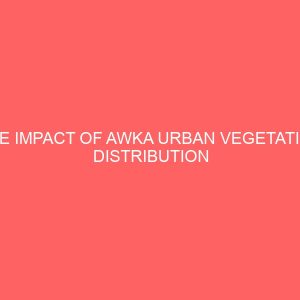
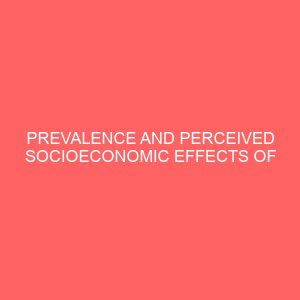
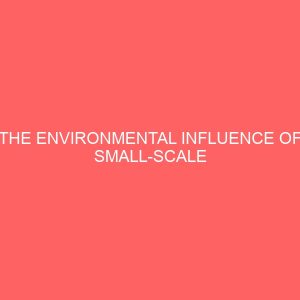
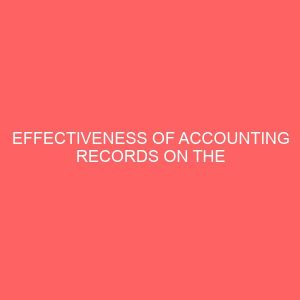
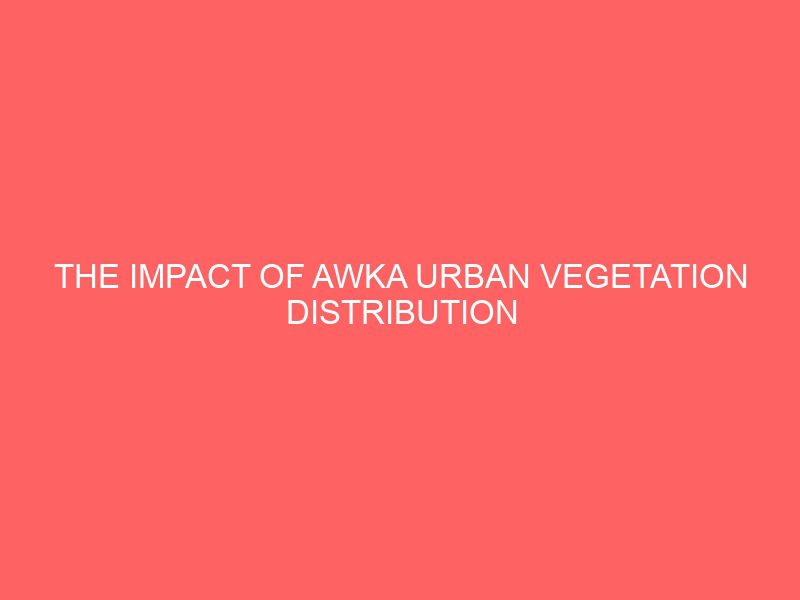
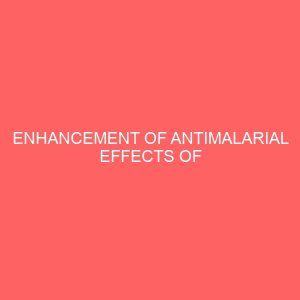

Reviews
There are no reviews yet.